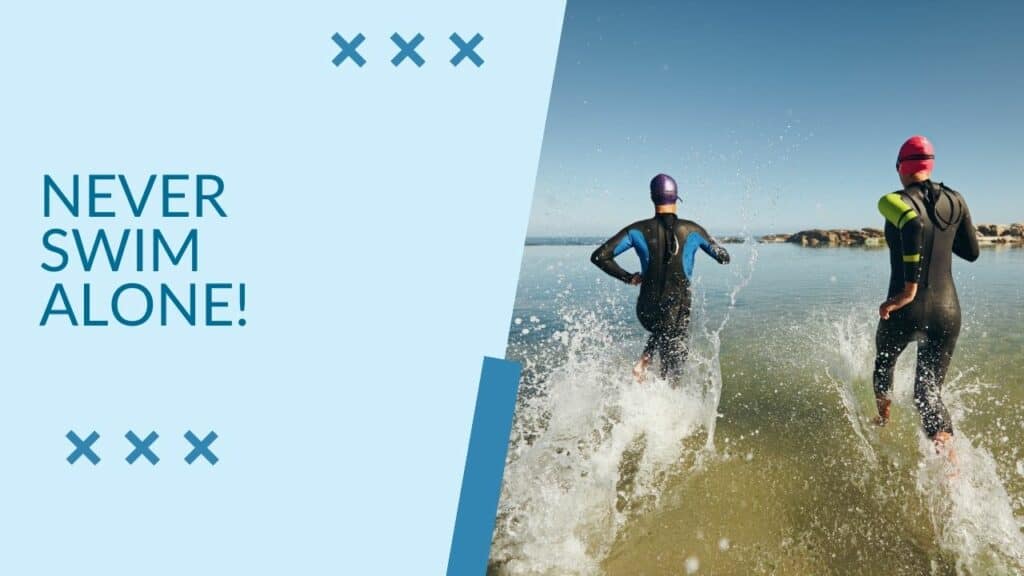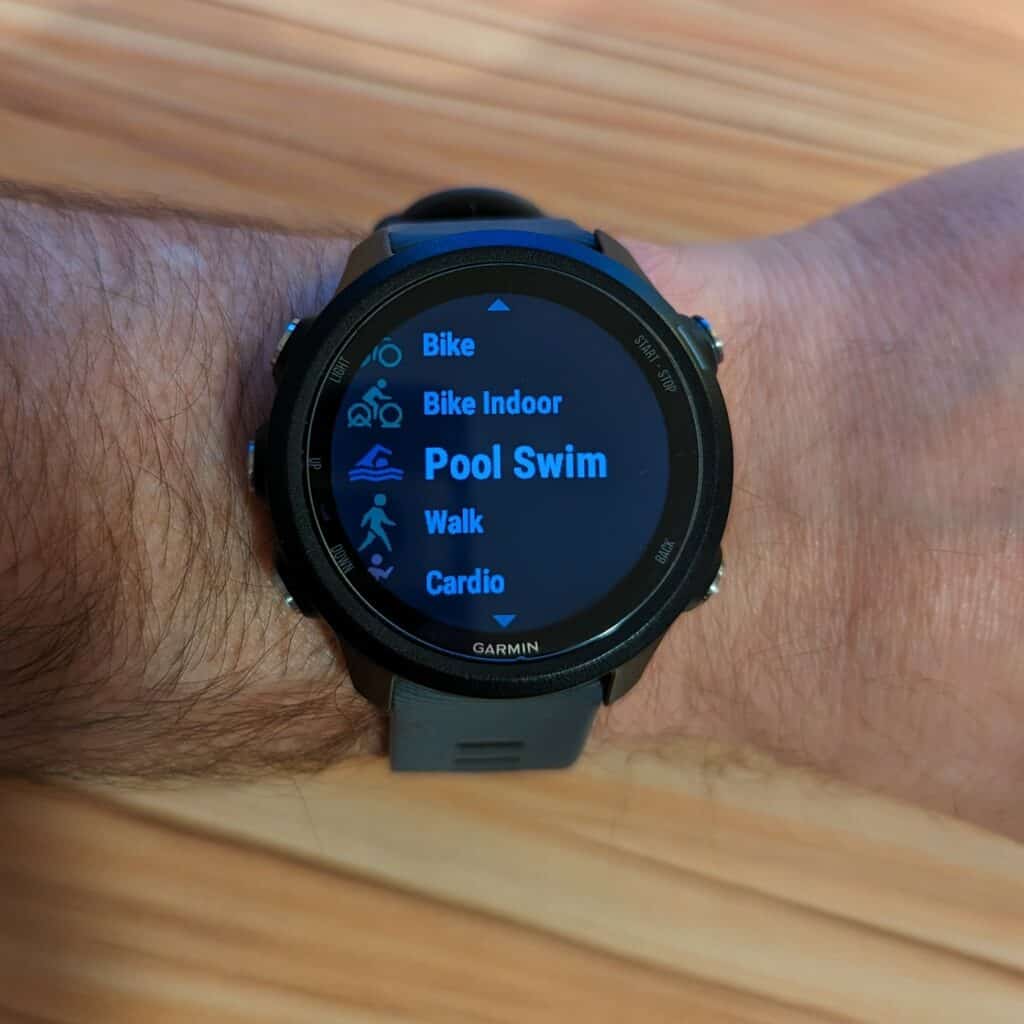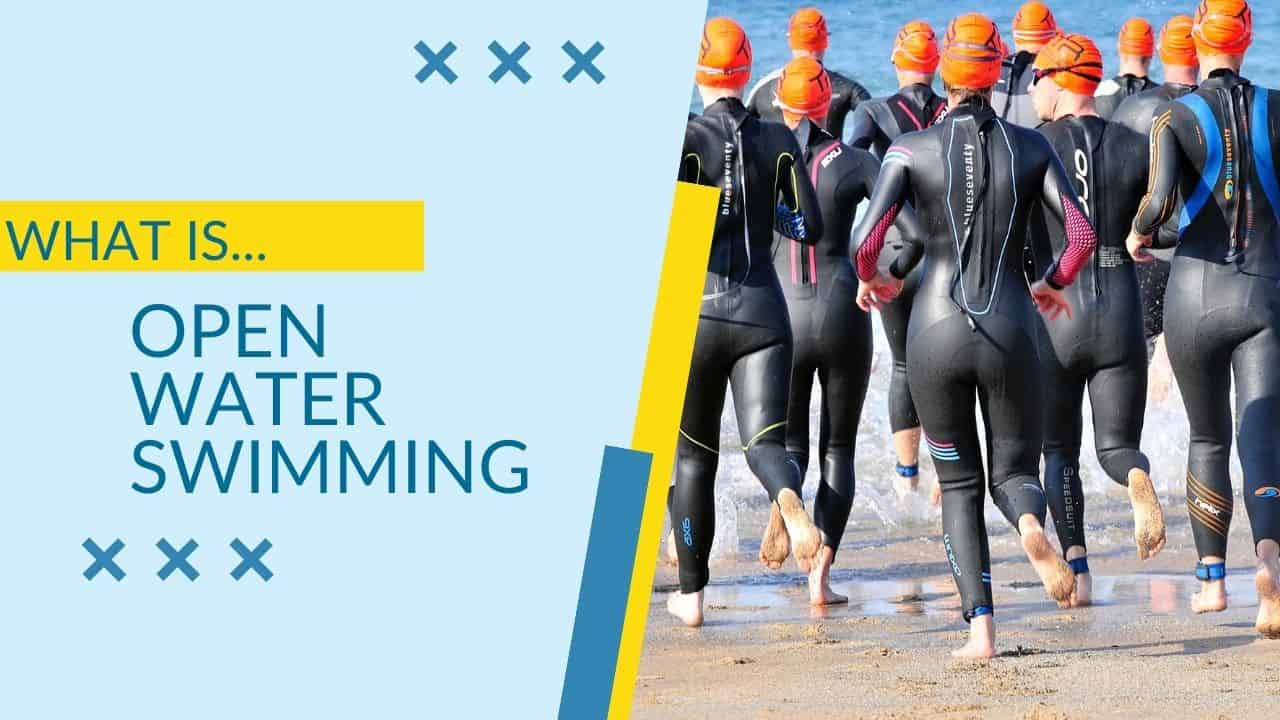Did you know that open water swimming can turn you into a real-life aquatic superhero?
No, we’re not talking about Aquaman… but the incredible physical and mental benefits that open water swimming offers might just make you feel like one.
Open water swimming is the thrilling and challenging sport of swimming in natural bodies of water such as oceans, lakes, rivers, and bays. It’s a fantastic way to combine endurance, strength, and the great outdoors.
Unlike pool swimming, which takes place in a controlled environment, open water swimming exposes you to the elements and the unpredictable nature of outdoor bodies of water.
This exciting form of swimming has been steadily growing in popularity, with more and more people discovering its unique allure, from triathlons to marathon swims.
In this blog post, we will answer the question “what is open water swimming”.
So grab your goggles and wetsuit, and let’s take the plunge into this exhilarating world together!
Table of Contents
- Differences between open water swimming and pool swimming
- Benefits of open water swimming
- How to get started with open water swimming
- Necessary equipment for open water swimming
- Tips for beginners
Please do not confuse my personal blog for medical advice. Please consult with a healthcare professional before starting or altering any training plan. This post may contain affiliate links. If you make a purchase after clicking on a link, I get a small percentage of the sale at no additional cost to you.
Differences between open water swimming and pool swimming
Temperature
When it comes to open water swimming, one of the most significant differences from pool swimming is the water temperature. Natural bodies of water can vary greatly in temperature depending on the season, location, and weather conditions. This requires you to adapt to the cold or warm water, which can be both challenging and invigorating.
I remember my first open water triathlon race was in water that was 55°F.
It was so cold I immediately started hyperventilating when my face was submerged, and I had to complete the race with breaststroke (even though I was wearing a wetsuit over my swimsuit!)
Weather
Open water swimming is heavily influenced by the weather.
When you’re doing an open water swim, you must contend with factors like wind, rain, and even waves, which can make the experience more challenging and unpredictable.
This forces you to be flexible and adaptive to changing conditions, unlike the controlled environment of a pool.
Current/Waves/Tides/etc.
In open water, you face the added challenge of navigating currents and tides. These forces can affect your swimming speed, direction, and energy expenditure. Learning how to read and respond to currents is a crucial skill for any open water swimmer.
You’ll also want to learn to breathe on both sides… otherwise, you can open your mouth to breathe and get hit by a big wave 🌊🌊🌊.
Navigation
While pool swimming typically involves following a straight line along the bottom or lane ropes, open water swimming requires you to navigate a course without these visual aids.
This means developing the skill of sighting, which involves lifting your head periodically to spot landmarks and stay on course. Sighting is essential for staying on track and avoiding swimming extra distance.
Swimming techniques and adaptations
Open water swimming often requires you to adapt your technique to the water.
For example, you may need to modify your stroke to accommodate waves or to maintain a steady rhythm in choppy water.
If you’re racing, you may also find yourself dealing with other swimmers in close proximity during events, which requires developing skills to swim efficiently in a crowd. (Trust me– it’s quite the adrenaline rush)
Open water swimming presents a unique set of challenges compared to pool swimming. Embracing these differences and honing the necessary skills can make open water swimming an exciting and rewarding experience.
Benefits of open water swimming
Improved cardiovascular fitness
When you take up open water swimming, you’ll notice an improvement in your cardiovascular fitness. The natural resistance provided by the water, combined with the added challenge of environmental factors, means that your heart and lungs have to work harder. As a result, you’ll develop greater cardiovascular endurance and overall fitness.
Enhanced muscular strength and endurance
Open water swimming engages nearly every muscle in your body, helping you build strength and endurance. The unpredictable conditions in open water require you to adapt your stroke, which often leads to increased muscle activation. Over time, you’ll find that your muscles become stronger and more efficient at propelling you through the water.
Stress reduction
There’s something incredibly calming about immersing yourself in nature. As you swim in the open water, you’ll find that your stress levels decrease, and your mind becomes more relaxed. The rhythmic, meditative nature of swimming can help you let go of daily worries and focus on the present moment.
Improved mental focus and resilience
Open water swimming demands mental focus and resilience. As you learn to navigate currents, sight landmarks, and adapt to changing conditions, you’ll develop a stronger mindset. This mental toughness can translate into other areas of your life, helping you face challenges head-on and persevere even when things get tough.
How to get started with open water swimming
Safety first: Never swim alone
The most important rule when it comes to open water swimming is to never swim alone.
Always have a buddy or swim with a group, as this ensures that someone can provide assistance or call for help if needed. Swimming with others not only increases your safety but also makes the experience more enjoyable and social.

Finding the right location
Once you’ve got your swimming buddy or group sorted, the next step is to find a suitable location. Look for local beaches, lakes, or rivers where swimming is permitted and safe.
Ensure that the area has easy access, and if possible, has other swimmers or lifeguards present. You can also search online for open water swimming groups or clubs in your area, which can offer guidance and camaraderie as you begin your journey.
Necessary equipment for open water swimming
Wetsuits and swimskins
Depending on the water temperature, you might need a wetsuit to keep you warm and comfortable during your swim. Wetsuits are designed to trap a thin layer of water between your body and the suit, which your body warms, providing insulation. (Lots of beginners I know start with the TYR Hurricane)

For warmer water temperatures, you may opt for a swimskin, which is a thinner and more flexible garment that reduces drag but doesn’t provide much insulation.
SmartWatch
While you don’t need a smartwatch to track your open water swims, if you’re a nerd, like me, you’ll want to track every workout you ever do.
While lots of smart watches can help count your laps in the pool, not all of them can do open water swimming.
For example, my Garmin Forerunner 245 can’t track open water swims but more advanced watches like the Forerunner 955 and the Fenix 7 can.

Goggles and swim caps
Invest in a good pair of goggles that fit comfortably and provide clear visibility in various light conditions.
I have been really enjoying my Arena googles for both open water and pool swims.
A well-fitting swim cap can help reduce drag and keep your hair out of your face while swimming. Some swimmers prefer using a brightly colored swim cap, making it easier for others to spot them in the water.
Safety gear
It’s essential to have some safety gear when open water swimming. A brightly colored float, also known as a swim buoy, can be attached to your waist and trail behind you, making you more visible to boats and other watercraft. A swim buoy is not a substitute for having a friend kayak or boat alongside you if you are swimming through a large body of water.
Tips for beginners
Gradual acclimatization
Start by swimming in shallow water near the shore and gradually increase the distance and depth as you become more comfortable. This will help you acclimate to the water temperature and conditions without becoming overwhelmed.
Learning to navigate
Practice sighting and navigation techniques in calm water before venturing into more challenging conditions. Familiarize yourself with the landmarks around your chosen swimming spot, and use them to help guide your course.
Swimming with a buddy or group
As mentioned earlier, always swim with a buddy or group. This not only increases your safety but also provides support and encouragement as you face the unique challenges of open water swimming.
By taking these steps, you can safely and confidently embark on your open water swimming adventure, embracing the excitement and freedom that comes with swimming in the great outdoors.
Summary- Open water swimming is one amazing sport!
In conclusion, open water swimming offers a unique and exhilarating experience that combines physical and mental challenges with the beauty of nature. As you venture into the open waters, you’ll discover new strengths, forge lasting friendships, and create unforgettable memories.
So, why not take the plunge and dive into the world of open water swimming? Grab your goggles, find a buddy, and embark on an incredible aquatic adventure. You might just find that you fall in love with the freedom and excitement that open water swimming has to offer. Happy swimming!

About the author
Hi! I’m Sam. And I’m a nerd. Swimming Nerd. Gear Nerd. Triathlon Nerd. I swam in high school and have even done a few sprint and Olympic distance triathlons. I’m excited to share my love of swimming with you through this site!

